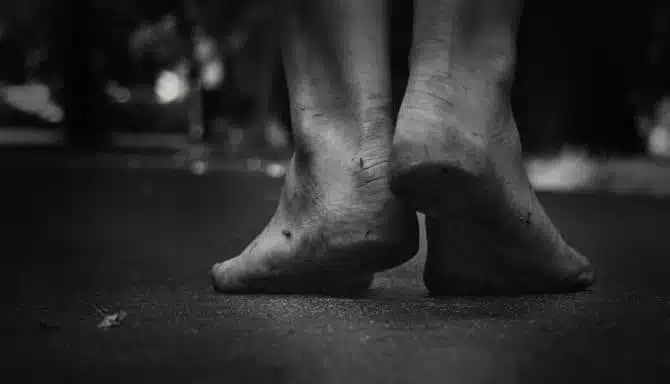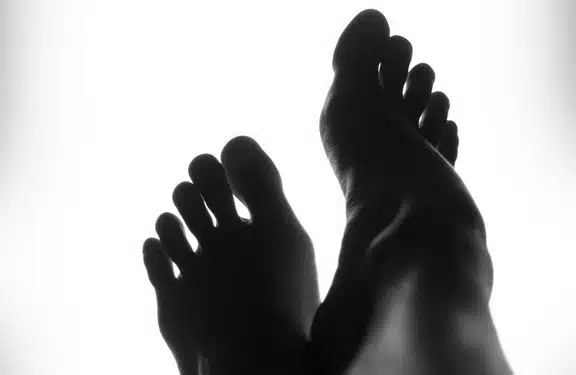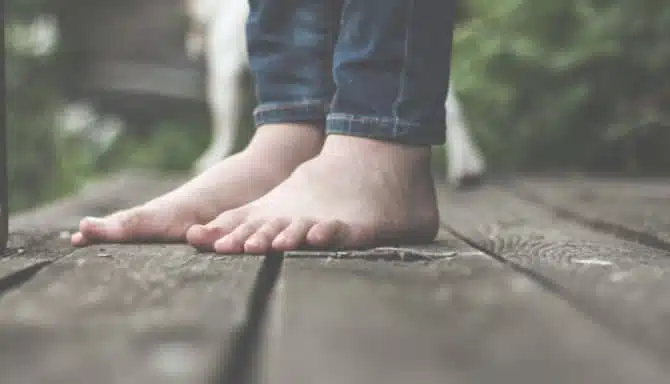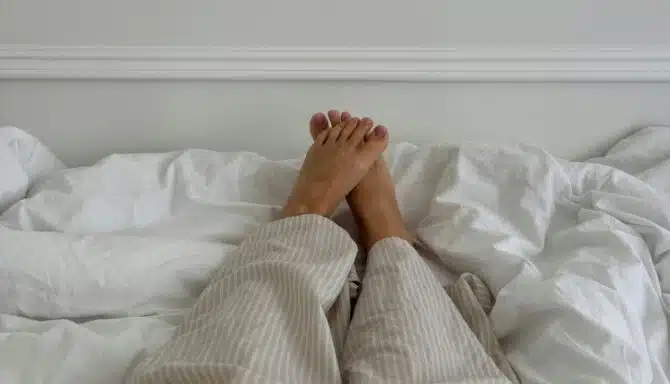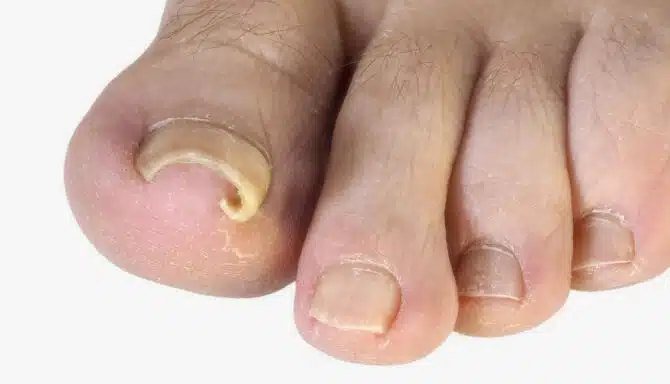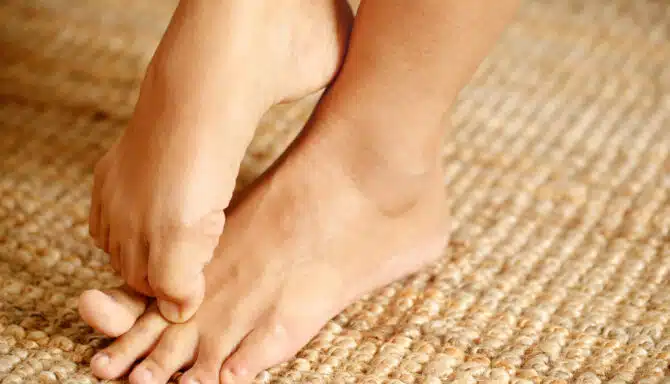Your legs are involved in every aspect of movement. They’re the foundation of your body, and act as shock absorbers. Our reliance on our legs cannot be overstated. It’s crucial we take proper leg and foot pain management to avoid common foot conditions.
Overwhelmingly, there are some common foot conditions that are more prevalent than others. These are either injuries or conditions that a large portion of the population experiences once, or repeatedly. To put you on the right track, we’ve rounded up 10 common foot conditions. Note that these are listed in no particular order.
1. Bunions
A bunion is perhaps the widest known foot condition. A bunion is an enlargement on the outside of the big toe. The enlargement can be a bony outgrowth, or a shift in your big toe. Often the base of the metatarsal shifts outwards (meaning your toe points inwards), and a bunion results because of the deformity.
You may develop bunions through any of the following reasons:
- Your foot is shaped in a way that makes you more likely to have bunions
- Your foot rolls overly inwards when you walk
- Flat feet
- Tight footwear
Fortunately, a physical therapy regimen, over-the-counter products, and proper footwear enables you to live with bunions without surgery.
2. Athlete’s Foot
Athlete’s foot is a contagious fungal skin infection that affects the skin on soles of feet and between toes. The fungi that causes athlete’s foot is commonly found in moist places, like shared showers and locker rooms.
Athlete’s foot typically presents as a translucent white moist skin between the toes on one or both feet. To treat the condition, you can use over-the-counter products including medicated creams, ointments, sprays, and powders.
3. Ingrown Toenails
An Ingrown Toenail occurs when the nail begins to grow into the skin. In many cases, you can treat ingrown toenails yourself. In severe cases, you should consult a doctor.
Typically, wearing tight shoes, cutting your nails too short, or not across, and injuring your toenail can cause an ingrown toenail. Home remedies include soaking your feet in warm water, wearing proper footwear, taking anti-inflammatories, and placing dental floss under the edge of the toenail.
If the ingrown toenail is serious, surgery is performed.
The surgery consists of numbing the toe with a local anaesthetic, then removing the portion of the toenail that is growing into the skin, and finally, applying a chemical to the nail root to prevent regrowth.
4. Black Toenails
Black toenails may be rare to the majority of the population, but are common among runners. The repeated nature of running puts your toenails at risk due to impact and friction. Typically, black toenails result from a blister underneath the toenail. The most common cause is tight footwear, and from undulating terrain as downhill running adds pressure on your toes.
You might also get a black toenail because of trauma to the toe. Occasionally, a black toenail will fall off.
Here’s everything you need to know about black toenails including treatment and prevention.
5. Plantar Fasciitis

This foot condition involves inflammation of a thick band of tissue that connects your heel with your toes – the plantar fascia. Plantar fasciitis can cause sharp pain in the heel, especially in the morning.
Runners are especially prone to plantar fasciitis because of the repeated stress to the plantar fascia. Common treatment and preventative measures include self-massage with a golf ball, anti-inflammatories, and if necessary, custom orthotics.
6. Nail Fungus
The toes are particularly susceptible to nail fungus because fungi thrive in dark, moist places. Since many of us wear shoes for hours every day, one can understand how nail fungus comes about.
Common symptoms of nail fungus include yellowing and thickening of the toenail, brittleness, and sometimes an unpleasant odour. For early or mild cases of nail fungus, you can use a topical antifungal cream.
To prevent nail fungus, wash and dry your feet regularly, don’t share nail clippers, avoid being barefoot in public facilities, and keep your toenails short, but not too short.
7. Bone Spurs
Bone spurs are bony outgrowths, typically in areas prone to osteoarthritis. The most common forms of bone spurs in the foot include heel spurs, and a bone spur on top of the first metatarsophalangeal joint (MTJ). The latter is a common spot. Stiffness and arthritis in the big toe leads to a condition known as hallux rigidus.
Bone spurs inherently reduce flexibility and can be quite painful. With treatment including proper footwear, people can live normally with bone spurs without needing surgery. You should note that bone spurs are progressive meaning there’s no reversal of impact and damage done.
8. Corns
Corns are like calluses, except that corns can be painful. A corn is an area of hardened skin that develops on areas of the feet that sustain too much compression.
A corn has a few hot spots: between your toes, the outer edge of your little toe, and on top of the toes.
Corns are removable. One of our Toronto foot clinic specialists or chiropodists can safely remove the build-up of tissue and assess whether Orthopedic Shoes or Custom Orthotics may be indicated to prevent their recurrence.
9. Blisters
Blisters are more of an annoyance than anything. This minor foot condition occurs when the skin is aggravated. Because of this friction, a small fluid-filled bubble on the skin forms.
Fortunately, most blisters heal on their own. To ensure there are no complications, you can cover the blister with an adhesive bandage or blister pad, both of which are available at our Toronto foot clinic. Common tricks to avoid blisters include using baby powder for sweaty feet, proper moisture-wicking socks, and wearing shoes that fit.
10. Gout
Gout affects roughly 3 million Canadians each year.
This condition is a form of arthritis that can develop rapidly. The painful condition involves swelling and tenderness of joints. Gout is most common at the base of the big toe.
According to the Mayo Clinic, “gout occurs when urate crystals accumulate in your joint, causing the inflammation and intense pain of a gout attack. Urate crystals can form when you have high levels of uric acid in your blood.” Foods that can lead to high levels of urate are red meats, seafood, refined or processed carbohydrates, sugary drinks and alcohol such as beer and hard liquor.
And there you have it: 10 common foot conditions.
This list is by no means an exhaustive list. There are tens, if not hundreds, of different common foot conditions you might develop over the course of your life. To address your foot issues early, see a foot specialist.
If you’re in Toronto, Book An Appointment with a specialist today, or visit the store for everyday items like compression socks, footwear, and for a custom shoe fitting.
